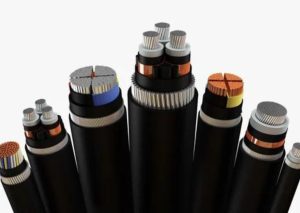 In the recent case of Havells India Limited v Azad Singh, Delhi High Court granted a temporary injunction in favour of the plaintiff, restraining the defendant, Azad Singh, from using in any manner the registered trademark Reo belonging to the plaintiff.
In the recent case of Havells India Limited v Azad Singh, Delhi High Court granted a temporary injunction in favour of the plaintiff, restraining the defendant, Azad Singh, from using in any manner the registered trademark Reo belonging to the plaintiff.
Havells is a leading fast-moving electrical goods company dealing in a wide range of products such as cables and wires, motors, fans, modular switches and home appliances. It holds the registered trademark REO/ for its low-tension cables. Havells has also filed an application for the trademark in a different style, which is pending for classes 7, 9 and 11, and which appears on labels affixed to their goods. The mark “REO” is well associated with the plaintiff’s brand name.
Havells was aggrieved by the defendant’ adoption of identical and deceptively similar trademarks Reo-LT/ and ReoLT, the latter in a style similar to that appearing on the plaintiff’s labels. The defendant had also filed an application for trademark registration in class 9.
The plaintiff submitted that the defendant’s marks subsumed its Reo marks completely. The defendant had simply added the suffix LT to the mark, an abbreviation for low tension. The plaintiff had also used this term in describing their relevant products and is therefore descriptive. It was alleged that the defendant’s products were counterfeit and not available in the open market. They were sold in a deceptive manner, creating an impression that the defendant was associated with the plaintiff.
In determining trademark infringement and passing off, courts rely on the triple identity test to determine the likelihood of deception among consumers. The three essentials that an applicant has to fulfil are whether both marks are similar or deceptively similar; whether both marks are used in relation to identical goods, and whether the goods are sold or distributed in identical trading channels.
The facts of this case fall within the ambit of the test as the rival marks were deceptively similar, used in relation to identical goods and sold through identical trading channels.
Prior use of the mark is the most common defence used by defendants in trademark infringement proceedings. Section 34 of the Trademarks Act, 1999, provides that the proprietor or registered user of a registered trademark cannot interfere with or restrain the use of an identical or similar trademark when that proprietor or a predecessor has continuously used it prior to the applicant’s use of their mark. In the present case, the plaintiff claimed to have been using the mark Reo extensively and continuously since 2012. Counsel for the defendant did not advance any arguments against the application, citing the lack of proper instructions.
The court, having compared the two sets of marks, held that the defendant’s marks were imitations of the plaintiff’s trademarks. It found in favour of Havells that the potential for misrepresentation and violation of the plaintiff’s trademark rights was clear and present. The court also found that the addition of the descriptive abbreviation LT, signifying low tension cables, as a suffix to “REO”, did little to distinguish the defendant’s marks from Havells’ marks. The minimal variation failed to prevent the likelihood of confusion among consumers, further adding to the need for injunctive relief. The court held that the balance of convenience was also in favour of the plaintiff, because the defendant had not been able to show any use of the impugned trademark in relation to his goods. Irreparable loss would be caused to Havells should the defendant not be restrained from using the trademarks in question.
The court granted the application and ordered that the defendant be restrained from using the trademark and trade name Reo-LT or any other mark deceptively similar to Havells’ mark, Reo. On the application of the plaintiff, the court appointed a local commissioner to seize goods bearing the offending marks. The plaintiff contended the defendant would otherwise dispose of those items, subsequently denying any connection to them. The case shows that no trademark is safe from unlawful exploitation. Trademark owners must be vigilant against the misuse of their intellectual property and take prompt action to protect their valuable assets. They must also expect a lack of co-operation from defendants.
Authors: Manisha Singh and Dhruv Tandan
First Published by: Law.Asia here



